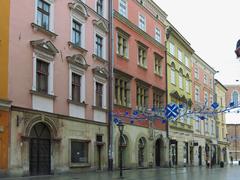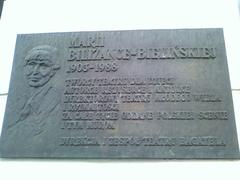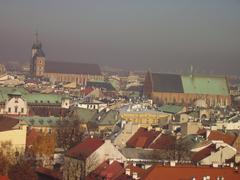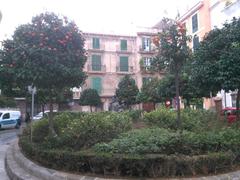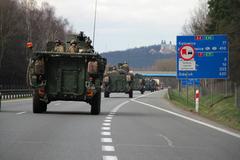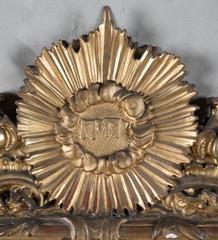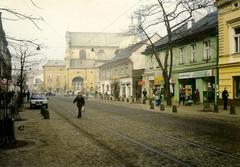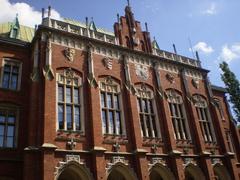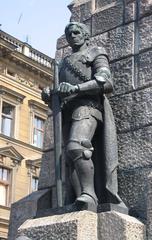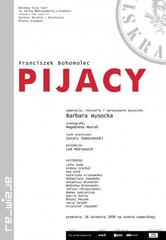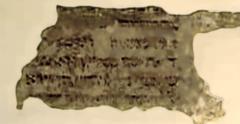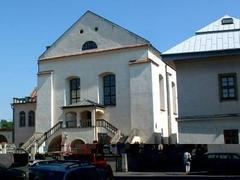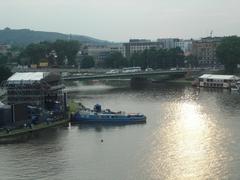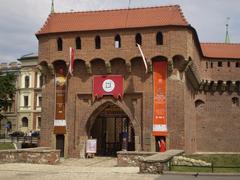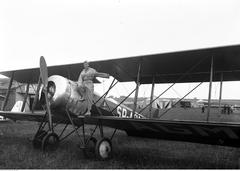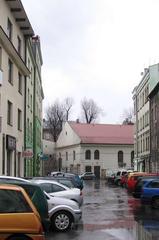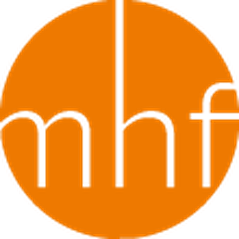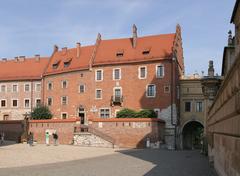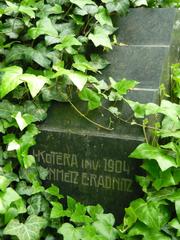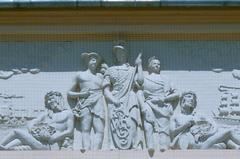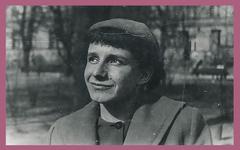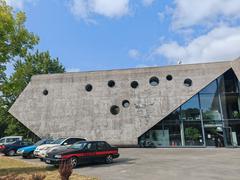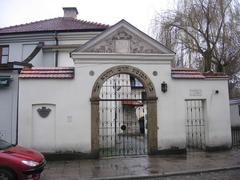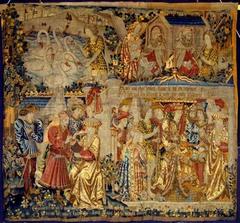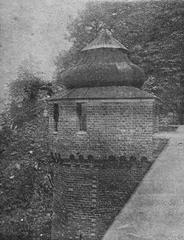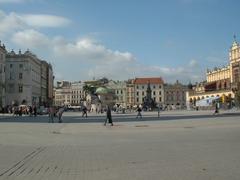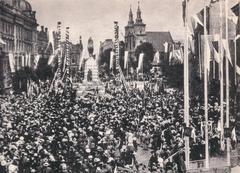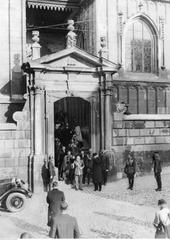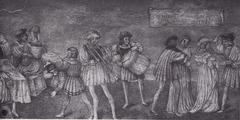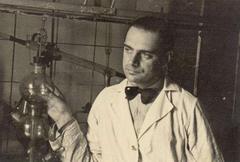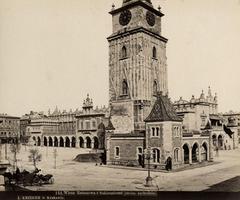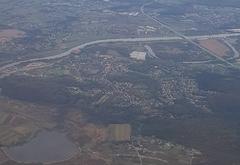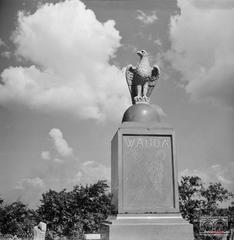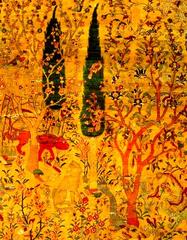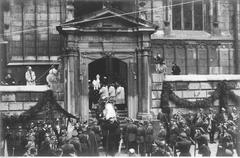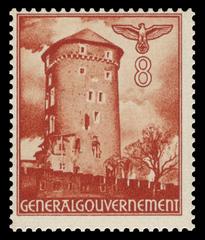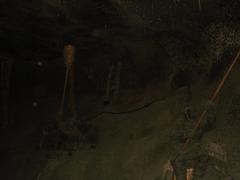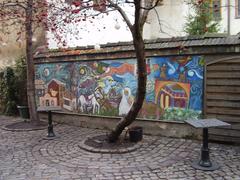Visiting Old Town Kraków: A Complete Guide
Date: 16/08/2024
Introduction
Kraków’s Old Town, a gem in the heart of Poland, is a UNESCO World Heritage Site renowned for its historical significance, architectural splendor, and vibrant cultural life (Lonely Poland). Established as a major European city in medieval times, this district offers a unique blend of history, from its early 9th-century Vistulan settlements to its flourishing period under King Casimir III the Great (Krakow Wiki). The Old Town’s medieval layout, established in 1257 after the Tatar invasions, features the largest medieval town square in Europe, known as Rynek Główny (Wikipedia). This guide delves into the rich history, key attractions, and practical information you need for an unforgettable visit to Kraków’s Old Town, ensuring you experience the best of what this historical treasure has to offer.
Table of Contents
- Introduction
- Early Beginnings and Medieval Development
- The Magdeburg Rights and Urban Expansion
- The Golden Era under Casimir III the Great
- Renaissance and Baroque Influences
- Decline and Transformation under Austrian Rule
- 20th Century and World War II
- Modern Era and UNESCO Recognition
- Key Landmarks and Attractions
- Visitor Information: Tickets and Visiting Hours
- Travel Tips and Nearby Attractions
- Special Events and Guided Tours
- Preservation and Cultural Significance
- Conclusion
- FAQ
Discover the Rich History and Key Attractions of Kraków’s Old Town: Visiting Hours, Tickets, and More
Early Beginnings and Medieval Development
Kraków’s Old Town, known in Polish as Stare Miasto, has a rich history that dates back to the 9th century. The earliest settlements were established by the Vistulans, a powerful tribe in Lesser Poland (Małopolska), around the area of today’s Kanonicza and Grodzka Streets, near the Wawel Hill (Krakow Wiki). These early settlements were fortified with an oak palisade and surrounded by the Vistula River’s arms, creating a natural defense system.
In 1038, the Castle on Wawel Hill became the royal residence, marking the beginning of Kraków’s significance as a political and cultural center. The town’s development accelerated, transforming it into a vibrant trade hub. By the 13th century, Kraków had become one of the major medieval European cities, not just a trade center but also a significant political and cultural hub (Wikipedia).
The Magdeburg Rights and Urban Expansion
A pivotal moment in Kraków’s history was the granting of the Magdeburg rights in 1257, which established the Main Square (Rynek Główny) and laid out the city’s streets in a grid pattern. This urban planning initiative followed the destruction caused by the Tatar invasions of 1241 and subsequent raids in 1259 and 1287 (Krakow Wiki). The Main Square, the largest medieval town square in Europe, became the focal point of the city’s social, economic, and political life.
The city’s fortifications were also enhanced during this period, with a 3 km (1.9 mi) defensive wall complete with 46 towers and seven main entrances. These fortifications were constructed over two centuries, providing robust protection against invasions (Wikipedia).
The Golden Era under Casimir III the Great
The reign of King Casimir III the Great (1333-1370) is often referred to as the golden era of Kraków. Under his rule, the city flourished economically and culturally. In 1364, Casimir III founded the Jagiellonian University, one of the oldest universities in Europe, which became a center of learning and intellectual activity (Krakow Wiki). The establishment of the Cloth Hall (Sukiennice) further boosted commerce, making Kraków a major trading center in medieval Europe.
Renaissance and Baroque Influences
The Renaissance and Baroque periods brought significant architectural and cultural developments to Kraków’s Old Town. The Renaissance Cloth Hall, located in the Main Square, was rebuilt in the 16th century and remains a central feature of the square today, housing gift shops, restaurants, and merchant stalls (Wikipedia). The Baroque influence is evident in the stunning facades of churches such as St. Peter and Paul Church on Grodzka Street, which was the first Baroque building in Poland (The Travel Hack).
Decline and Transformation under Austrian Rule
The partitions of Poland at the end of the 18th century led to Kraków being incorporated into the Austrian Empire. This period marked a decline in the city’s development, as it became a sleepy borderland town under Austrian rule (Krakow Wiki). However, the 19th century saw significant changes, including the demolition of the medieval city walls and the creation of the Planty Park, a ring of parks and gardens that encircle the Old Town (Krakow Wiki).
20th Century and World War II
Kraków’s Old Town witnessed significant events during the 20th century, particularly during World War II. On January 18, 1945, Soviet forces entered Kraków, forcing the German army to withdraw. The city emerged as part of the newly established People’s Republic of Poland (Wikipedia). Despite the war, the architectural design of the Old Town survived many cataclysms and retained its original medieval form.
Modern Era and UNESCO Recognition
Today, Kraków’s Old Town is a vibrant area that attracts visitors from all over the world. It was one of the first sites chosen for UNESCO’s original World Heritage List in 1978, inscribed as Cracow’s Historic Centre (Lonely Poland). The Old Town is also one of Poland’s official national Historic Monuments (Pomnik historii), designated on September 16, 1994, and tracked by the National Heritage Board of Poland (Wikipedia).
Key Landmarks and Attractions
Rynek Główny (Main Market Square)
Rynek Główny, or the Main Market Square, is the heart of Kraków’s Old Town and one of the largest medieval town squares in Europe. Measuring 200 meters by 200 meters, it has been the commercial, social, and administrative focal point of the city since the 13th century. The square is surrounded by historic townhouses, many of which have retained their medieval foundations despite their neoclassical facades. Notable landmarks within the square include the Cloth Hall (Sukiennice), St. Mary’s Basilica, and the Town Hall Tower (Wikipedia).
Visiting Hours & Tickets:
- Cloth Hall: Open daily from 10 AM to 8 PM. Entry is free.
- St. Mary’s Basilica: Open from 11:30 AM to 6 PM on weekdays. Tickets cost around 10 PLN.
- Town Hall Tower: Open from 10:30 AM to 6 PM. Tickets cost around 15 PLN.
Wawel Royal Castle and Wawel Cathedral
Perched atop Wawel Hill, the Wawel Royal Castle and Cathedral complex is a symbol of Poland’s national identity. The castle, a UNESCO World Heritage Site, showcases a blend of architectural styles, including Romanesque, Gothic, Renaissance, and Baroque. Visitors can explore the State Rooms, Royal Private Apartments, and the Crown Treasury and Armory.
Visiting Hours & Tickets:
- Wawel Castle: Open from 9:30 AM to 5 PM. Tickets range from 20 to 30 PLN depending on the exhibit (Wawel Official Site).
- Wawel Cathedral: Open from 9 AM to 5 PM. Entry is free, but some exhibits require tickets costing 12 PLN.
St. Mary’s Basilica
Located on the Main Market Square, St. Mary’s Basilica is one of Kraków’s most iconic landmarks. The basilica’s interior is a masterpiece of Gothic art, featuring a stunning blue ceiling adorned with golden stars and an intricately carved wooden altarpiece by Veit Stoss. Visitors can climb the 239 steps to the top of the taller tower for a panoramic view of the city (Krakow Wiki).
Visiting Hours & Tickets:
- Open from 11:30 AM to 6 PM on weekdays. Tickets cost around 10 PLN.
Every hour, a trumpeter plays the Hejnał mariacki from the taller tower, a tradition that commemorates a 13th-century trumpeter who was shot while warning the city of a Mongol invasion. The trumpet call abruptly ends mid-note, symbolizing the trumpeter’s sudden death.
Rynek Underground Museum
Beneath the Main Market Square lies the Rynek Underground Museum, an archaeological site that offers a glimpse into Kraków’s medieval past. The museum spans 6,000 square meters and features footbridges over archaeological digs, electronic displays, touch-screen computers, and holograms. Artifacts on display include Tatar arrowheads, clay figurines, leather shoes, dice, beads, medallions, and a 693 kg lump of commercial lead (Wikipedia).
Visiting Hours & Tickets:
- Open from 10 AM to 8 PM. Tickets cost around 19 PLN.
Kazimierz District
The Kazimierz District is the historic Jewish quarter of Kraków, known for its narrow streets, quaint shops, and picturesque synagogues. Key attractions include the Remuh Synagogue, the Old Synagogue, and the High Synagogue, each offering insights into the rich Jewish heritage of the city.
Visiting Hours & Tickets:
- Remuh Synagogue: Open from 9 AM to 4 PM. Tickets cost around 10 PLN.
- Old Synagogue: Open from 10 AM to 2 PM. Tickets cost around 12 PLN.
- High Synagogue: Open from 10 AM to 3 PM. Tickets cost around 10 PLN.
Kazimierz is also home to the Oskar Schindler’s Factory Museum, which tells the powerful story of Kraków’s history during World War II. The museum showcases artifacts, exhibits, and personal stories, offering a poignant insight into the city’s turbulent past. The district’s vibrant atmosphere, with its cafes, restaurants, and cultural events, makes it a lively place to explore.
Barbican and St. Florian’s Gate
The Barbican is a well-preserved medieval defense structure that once protected the northern entrance to the city. Built in the late 15th century, it features a circular fortress with seven turrets and walls up to three meters thick. The Barbican is connected to the city walls by a covered passage leading to St. Florian’s Gate, the main entry point to the Old Town (Seekrakow).
Visiting Hours & Tickets:
- Barbican: Open from 10 AM to 5 PM. Tickets cost around 9 PLN.
- St. Florian’s Gate: Open from 10 AM to 5 PM. Entry is free.
Collegium Maius
The Collegium Maius, part of the Jagiellonian University, is the oldest university building in Poland. Founded in the 14th century, it has been a center of learning for centuries and boasts notable alumni, including Nicolaus Copernicus. The museum within the Collegium Maius showcases historical artifacts, scientific instruments, and a collection of medieval manuscripts (Krakow Wiki).
Visiting Hours & Tickets:
- Open from 10 AM to 2:20 PM. Tickets cost around 15 PLN.
Sukiennice Cloth Hall
The Sukiennice Cloth Hall is a central feature of the Main Market Square and has been a hub of trade since the 14th century. Originally a center for the cloth trade, it now houses souvenir shops, cafes, and the Gallery of 19th-Century Polish Art. The hall’s Renaissance architecture, with its ornate arcades and decorative facades, makes it a striking landmark (Wikipedia).
Visiting Hours & Tickets:
- Cloth Hall: Open daily from 10 AM to 8 PM. Entry is free.
- Gallery of 19th-Century Polish Art: Open from 10 AM to 6 PM. Tickets cost around 20 PLN (Krakow Historical Museum Official Site).
Visitor Information: Tickets and Visiting Hours
Visitors to Kraków’s Old Town can explore many of its attractions free of charge, particularly its historic streets and squares. However, some landmarks, such as the Wawel Castle and St. Mary’s Basilica, require tickets. Visiting hours vary by attraction, with many sites opening around 9 AM and closing in the early evening. It is advisable to check the official websites of each attraction for the most up-to-date information on tickets and opening hours (Krakow Wiki).
Travel Tips and Nearby Attractions
- Best Time to Visit: The most popular time to visit Kraków is from June to August when the weather is warm, and the parks are lush. However, this is also the peak tourist season, so expect higher prices and longer queues (Full Suitcase). For a less crowded experience, consider visiting in the shoulder seasons of spring (April to May) or fall (September to October).
- Accommodation: For a central location, consider staying in the Old Town itself. However, if you prefer a quieter area, the Kazimierz district is a great alternative and is just a 10 to 15-minute walk from the Old Town (Full Suitcase).
- Getting Around: The Old Town is best explored on foot due to its compact size and pedestrian-friendly streets. For a quicker tour, consider renting an e-scooter (The Travel Hack).
- Dining: The Main Market Square and surrounding streets are filled with cafes and restaurants offering traditional Polish cuisine. Don’t miss trying local specialties like pierogi (dumplings) and oscypek (smoked cheese) (Seekrakow).
- Shopping: The Cloth Hall is a great place to buy souvenirs, but for a more local experience, visit the flea markets at Plac Nowy in Kazimierz or in the Jewish Quarter (Nomadic Matt).
- Safety: Kraków is generally safe for tourists, but like any popular destination, it’s wise to be aware of your surroundings and keep an eye on your belongings, especially in crowded areas (Full Suitcase).
Special Events and Guided Tours
Kraków’s Old Town hosts numerous events throughout the year, including the Christmas Market in December and the Kraków Film Festival in May. Guided tours are available in multiple languages, offering in-depth insights into the history and culture of the area. Photographic spots abound, with the Main Square, Wawel Castle, and Planty Park being popular choices. Check local listings for current events (Krakow Events).
Preservation and Cultural Significance
The preservation of Kraków’s Old Town is a testament to its cultural and historical significance. The area has retained its medieval layout and architectural integrity, making it a living museum of European history. The Old Town’s vibrant atmosphere, with its bustling squares, charming streets, and historic buildings, continues to captivate visitors and locals alike.
Conclusion
Kraków’s Old Town is a captivating destination that beautifully intertwines history, culture, and architecture. From its early beginnings as a Vistulan settlement to its recognition as a UNESCO World Heritage Site, the Old Town has retained its medieval charm and significance. Key landmarks like the Main Market Square, Wawel Castle, and St. Mary’s Basilica offer a window into the past, while the vibrant atmosphere, cultural events, and guided tours make it a lively modern-day attraction (Lonely Poland). Whether you’re exploring the cobbled streets, marveling at the architectural wonders, or immersing yourself in the local culture, Kraków’s Old Town promises a rich and memorable experience. Stay updated with the latest travel information and events by following our social media channels and downloading our mobile app.
FAQ
Q: What are the visiting hours for Kraków’s Old Town? A: Visiting hours vary by attraction, but many sites open around 9 AM and close in the early evening. Check the official websites for the most accurate information.
Q: Do I need tickets to visit Kraków’s Old Town? A: Many areas of the Old Town are free to explore, but some landmarks like the Wawel Castle and St. Mary’s Basilica require tickets.
Q: What are some nearby attractions to Kraków’s Old Town? A: Nearby attractions include the Kazimierz district, the Schindler Factory Museum, and the Planty Park.
Q: Are guided tours available in Kraków’s Old Town? A: Yes, guided tours are available in multiple languages, offering detailed insights into the area’s history and culture.
